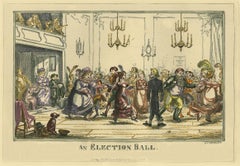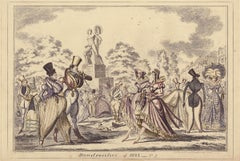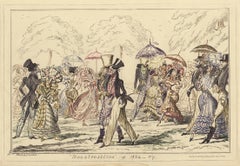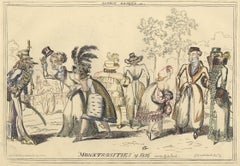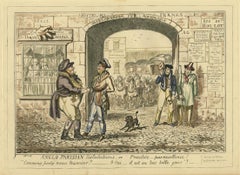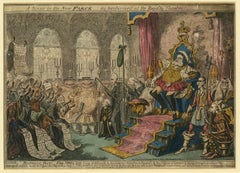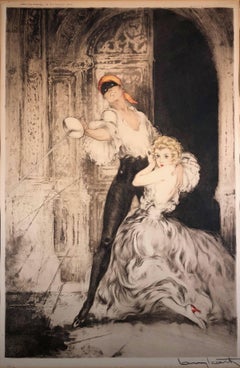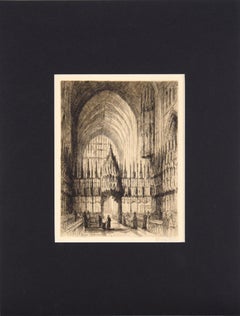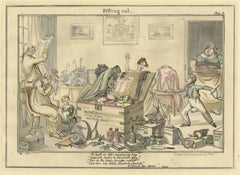George Cruikshank Interior Prints
George Cruikshank was a British caricaturist and book illustrator praised as the modern Hogarth during his life. His book illustrations for his friend Charles Dickens, and many other authors, reached an international audience. Cruikshank was born in London. His father, Isaac Cruikshank, was one of the leading caricaturists of the late 1790s, and Cruikshank started his career as his father's apprentice and assistant. His older brother, Isaac Robert, also followed in the family business as a caricaturist and illustrator. Cruikshank's early work was a caricature, but in 1823, at the age of 31, he started to focus on book illustration. He illustrated the first, 1823 English translation (by Edgar Taylor and David Jardine) of Grimms' Fairy Tales, published in two volumes as German Popular Stories. On 16th October 1827, he married Mary Ann Walker (1807–49). Two years after her death, on 7th March 1851, he married Eliza Widdison. The two lived at 263 Hampstead Road, North London. Upon his death, it was discovered that Cruikshank had fathered 11 illegitimate children with a mistress named Adelaide Attree, his former servant, who lived close to where he lived with his wife. Adelaide was ostensibly married and had taken the married surname Archibold.
Mid-19th Century Victorian George Cruikshank Interior Prints
Watercolor, Etching
Early 19th Century Victorian George Cruikshank Interior Prints
Watercolor, Etching
Mid-19th Century Victorian George Cruikshank Interior Prints
Watercolor, Etching
Early 19th Century Victorian George Cruikshank Interior Prints
Watercolor, Etching
Early 19th Century Victorian George Cruikshank Interior Prints
Watercolor, Etching
Early 19th Century George Cruikshank Interior Prints
Watercolor, Engraving, Etching
Mid-19th Century Victorian George Cruikshank Interior Prints
Watercolor, Etching
Early 19th Century Victorian George Cruikshank Interior Prints
Watercolor, Etching
Early 19th Century Victorian George Cruikshank Interior Prints
Watercolor, Etching
Mid-19th Century Victorian George Cruikshank Interior Prints
Watercolor, Etching
Mid-19th Century Victorian George Cruikshank Interior Prints
Watercolor, Etching
Mid-19th Century Victorian George Cruikshank Interior Prints
Watercolor, Etching
Mid-19th Century Victorian George Cruikshank Interior Prints
Watercolor, Etching
1920s Art Deco George Cruikshank Interior Prints
Engraving, Aquatint
Early 20th Century Romantic George Cruikshank Interior Prints
Paper, Ink, Drypoint
1780s Realist George Cruikshank Interior Prints
Engraving
21st Century and Contemporary Contemporary George Cruikshank Interior Prints
Etching
Late 20th Century American Realist George Cruikshank Interior Prints
Etching
Early 19th Century Old Masters George Cruikshank Interior Prints
Engraving
Early 1900s Post-Impressionist George Cruikshank Interior Prints
Drypoint, Etching
Mid-19th Century Victorian George Cruikshank Interior Prints
Watercolor, Lithograph
Mid-20th Century Realist George Cruikshank Interior Prints
Aquatint
1930s American Impressionist George Cruikshank Interior Prints
Laid Paper, Etching
Late 19th Century George Cruikshank Interior Prints
Engraving
1720s French School George Cruikshank Interior Prints
Etching
Mid-19th Century Victorian George Cruikshank Interior Prints
Watercolor, Etching
